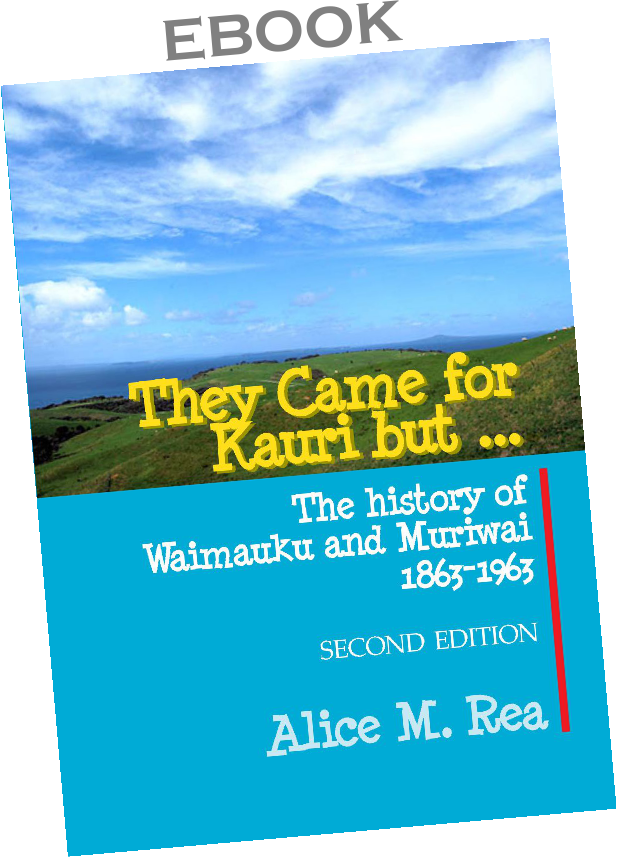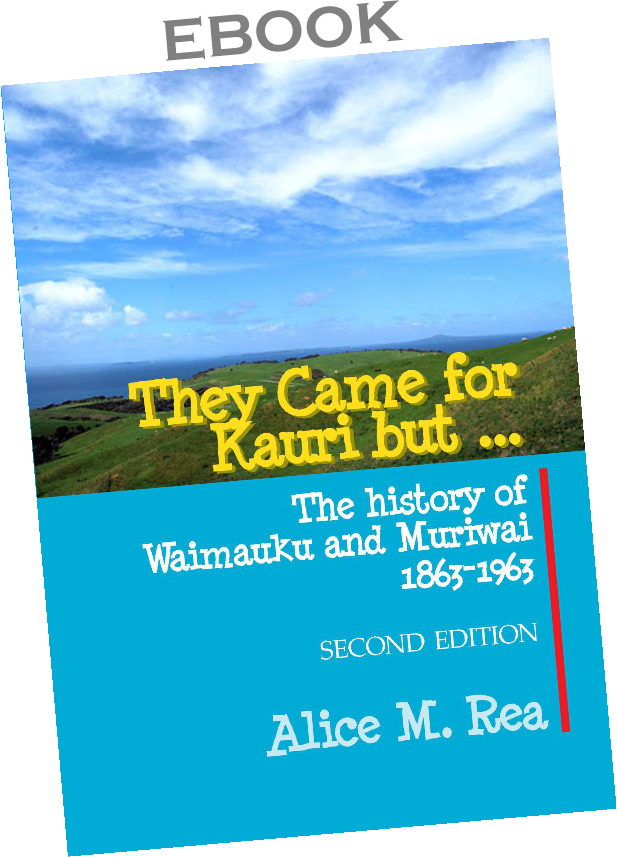This is a history of an area of north-west Auckland. In the 1840s the Kaipara Harbour was ringed with extensive tidal mudflats and misty headlands. On its shores was a vast forest of kauri trees, ideal for milling and being used for buildings in Auckland and Sydney.
A timber mill was established on the bank of the Kaipara at Awaroa, now known as Helensville, early after the founding of Auckland in 1841. Pitoitoi (today's Riverhead) was established on the opposite coast, at the end of Rangitopuni Creek which flows out into the Auckland harbour. Timber, people and goods were hauled back and forth from Helensville to Pitoitoi on carts pulled by teams of bullocks. From here the timber was barged down the creek to the waters of the Auckland Harbour then across to the new town of Auckland. This overland route was extremely rough and hazardous, especially in the winter, and can be seen today as 'Old North Road'.
The areas surrounding this route were slowly but sparsely settled, with Kaukapakapa first, then a few years later, in 1863, Waimauku at the head of the Waikoukou Valley. The first in the area was Samuel Frost and his family, who were followed by others.
Waimauku is a Maori word translated as 'wai' (stream) and 'mauku' (a small fern), probably referring to the ferns which grew along the Waikoukou Valley stream. It grew into a farming and fruit-growing community, and today features wineries and a mix of suburban and lifestyle properties.
Today's Muriwai, originally the Motutara district, was first populated by William Moore and his family in 1888, at a time when the road from Waimauku was a bullock track.
This unique book, first published in 1963 by the Waimauku Early Settlers Association, is one of the few books to relate the history of this area in North West Auckland. Of particular interest are the families involved and how they left their mark on a now burgeoning region. Complete with photographs of many people and places, it is a very worthwhile read.
The second edition (2012) has been edited, and rearranged, and now includes a list of the families mentioned.



